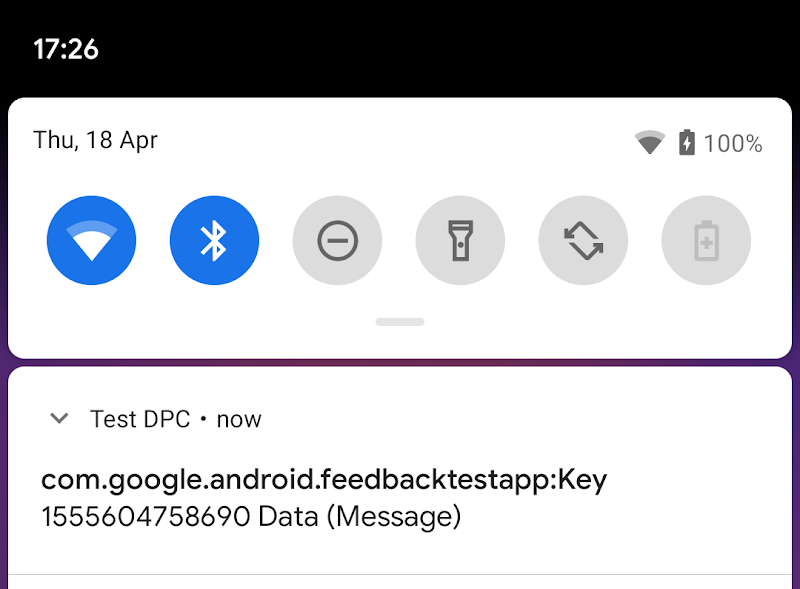단위 테스트 설정
이 섹션에서는 단위 테스트를 설정하여 앱이 확인합니다.
1단계: KeyedAppStatesReporter를 매개변수로 허용하도록 클래스 설정
create()를 직접 호출하는 대신 수락하도록 클래스를 수정합니다.
매개변수인 KeyedAppStatesReporter(BatteryManager 예)
클래스를 참조하세요.
Kotlin
class BatteryManager(val reporter:KeyedAppStatesReporter) { fun lowBattery(battery:Int) { reporter.setStatesImmediate( hashSetOf(KeyedAppState.builder() .setKey("battery") .setSeverity(KeyedAppState.SEVERITY_INFO) .setMessage("Battery is low") .setData(battery.toString()) .build())) } }
자바
public class BatteryManager { private final KeyedAppStatesReporter reporter; public BatteryManager(KeyedAppStatesReporter reporter) { this.reporter = reporter; } public void lowBattery(int battery) { final Collectionstates = new HashSet<>(); states.add(KeyedAppState.builder() .setKey("battery") .setSeverity(KeyedAppState.SEVERITY_INFO) .setMessage("Battery is low") .setData(Integer.toString(battery)) .build(); reporter.setStatesImmediate(states); } }
다음으로 KeyedAppStatesReporter.create를 사용하여
BatteryManager가 생성되는 모든 위치
2단계: build.gradle 파일에 엔터프라이즈 의견 테스트 라이브러리 추가
앱의
build.gradle 파일:
dependencies {
testImplementation 'androidx.enterprise:enterprise-feedback-testing:1.0.0'
}
3단계: FakeKeyedAppStatesReporter를 만들어 클래스에 전달
Kotlin
val reporter = FakeKeyedAppStatesReporter(); val batteryManager = BatteryManager(reporter);
자바
FakeKeyedAppStatesReporter reporter = new FakeKeyedAppStatesReporter(); BatteryManager batteryManager = new BatteryManager(reporter);
4단계: FakeKeyedAppStatesReporter와의 상호작용 어설션
예를 들어 설정된 상태가 없는지 확인하려면 다음을 실행합니다.
Kotlin
assertThat(reporter.keyedAppStates).isEmpty();
자바
assertThat(reporter.getKeyedAppStates()).isEmpty();
또는 특정 상태가 업로드되도록 요청된 경우:
Kotlin
assertThat(reporter.uploadedKeyedAppStatesByKey["battery"]).isNotNull()
자바
assertThat(reporter.getUploadedKeyedAppStatesByKey().get("battery")).isNotNull();
Test DPC에 테스트 의견 보내기
샘플 기기 정책 컨트롤러 앱 피드백을 수신할 수 있으며 테스트 DPC를 통해 다운로드.
1단계: Test DPC 설치
Test DPC의 최신 버전을 설치합니다. 앱을 다운로드할 수 있습니다. 다음으로 Test DPC를 기기 관리자로 설정합니다.
adb shell dpm set-device-owner com.afwsamples.testdpc/.DeviceAdminReceiver
2단계: 앱 의견 알림 사용 설정
Test DPC의 메뉴에서 앱 의견 알림을 사용 설정합니다.

키가 있는 앱 상태를 설정하는 이벤트를 트리거합니다. 성공하면 Test DPC가 표시됩니다. 알림의 피드백:


